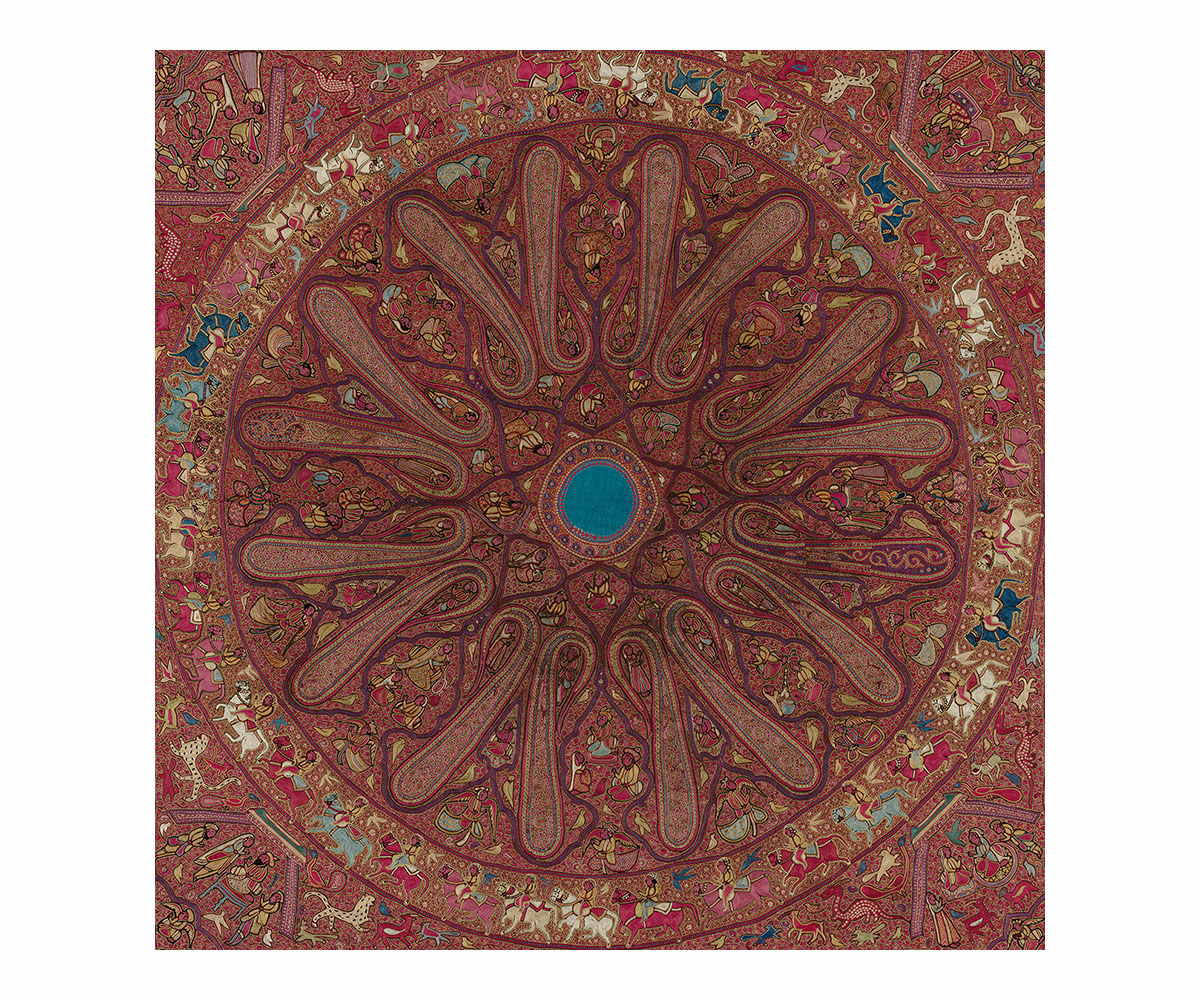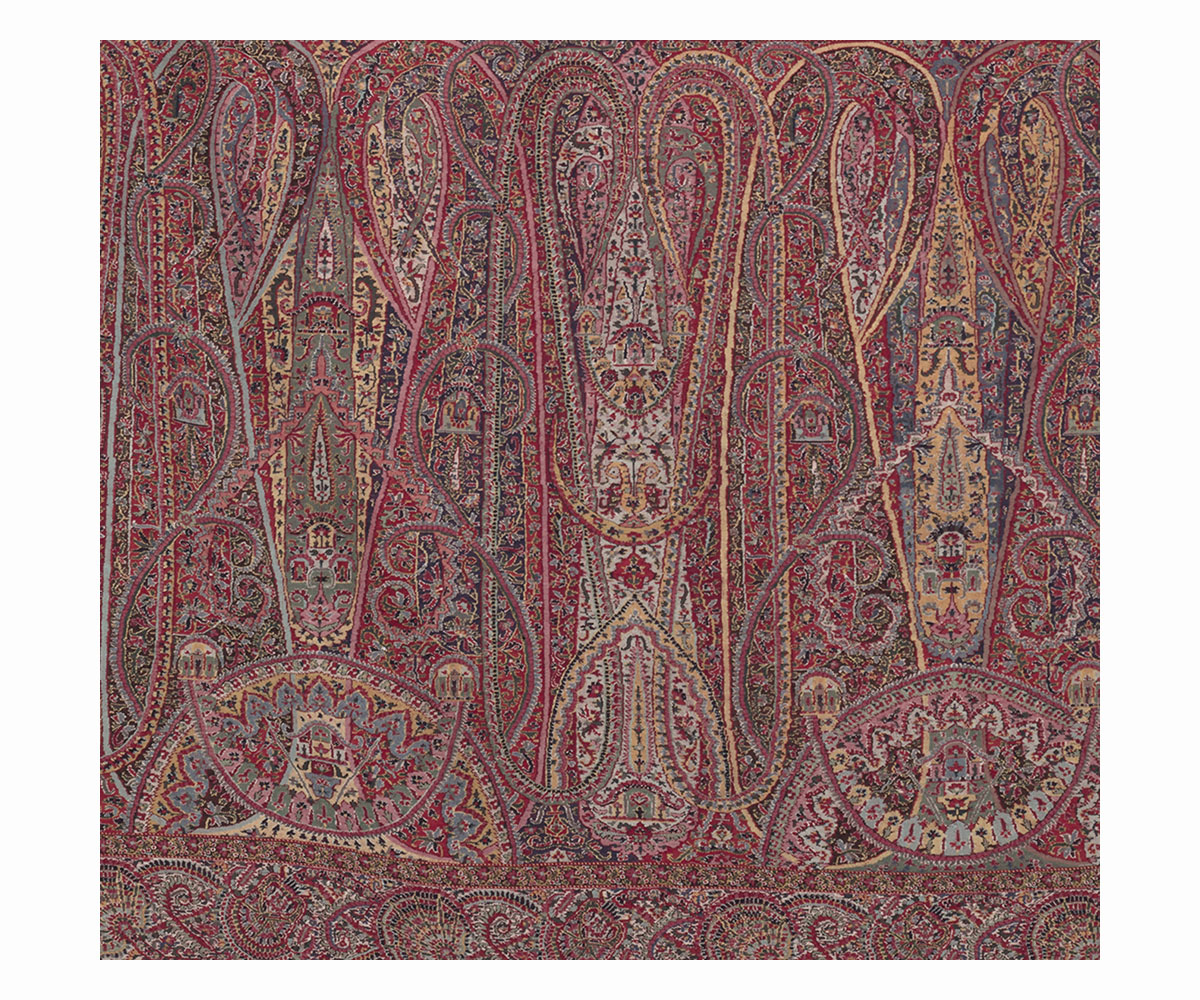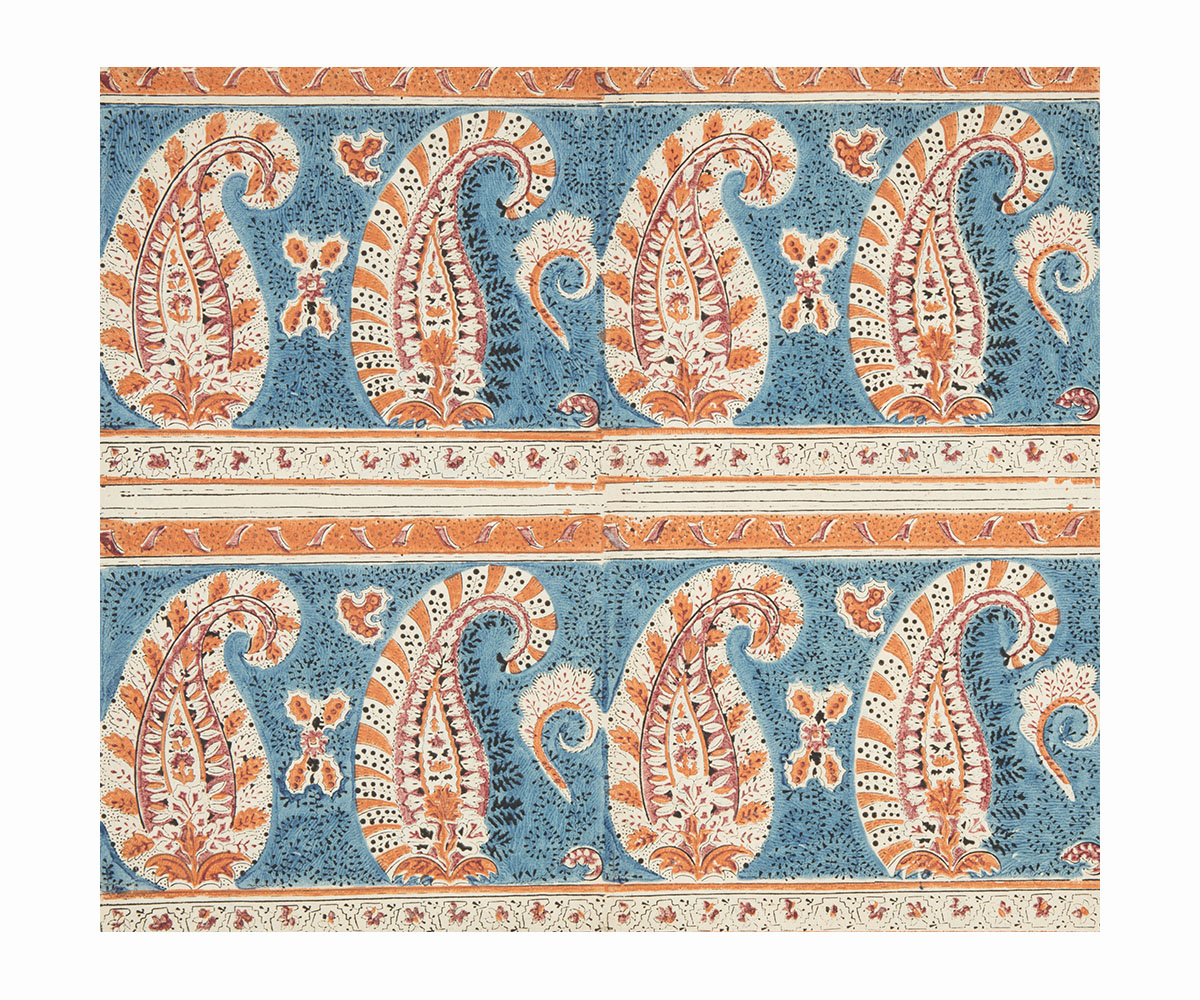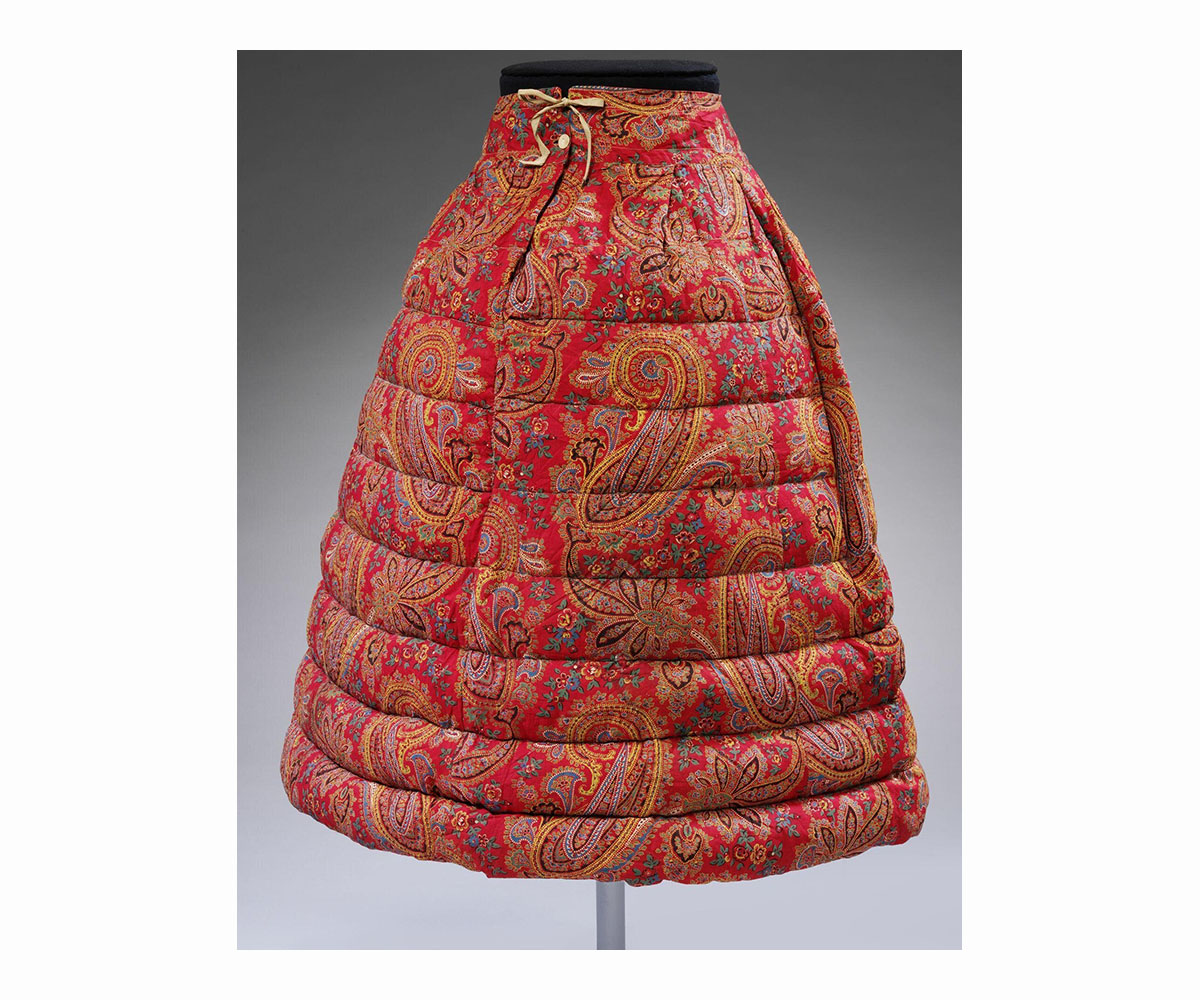ARTICLE
Badaam Motif
Recognisable by its stylised almond-like shape, the badaam motif bears visual similarities to the Persian boteh, or buta, and the kairi, or kalka motif. Its name is derived from the Persian term badaam, meaning “almond”. The badaam motif has several variants and analogues in various textile traditions, the best-known among which is the Paisley motif.
In India, the badaam motif is especially associated with the Kashmir Valley, where it developed in the sixteenth century with the arrival of the Mughals. It appears most commonly on the pashmina shawl as a part of the floral border design or as stand-alone outline motifs filled in with grouped flowers. The use of this motif has since extended beyond the traditional format of the Pashmina shawl and into other forms of printed, woven and embroidered fabric such as shawls and bed linen
The motif entered the popular visual idiom with its adoption and subsequent adaptation by the hippie culture of the 1960s and 70s and, later, the cowboy culture in the American Southwest. This paved the way for its entry into contemporary formal wear produced by large European luxury fashion houses and the couture of high-fashion brands. In India, besides continuing to be seen in traditional Kashmiri shawls, the badaam motif is now also a prominent feature of the chikankari embroidery tradition of Uttar Pradesh.
Bibliography
Our website is currently undergoing maintenance and re-design, due to which we have had to take down some of our bibliographies. While these will be re-published shortly, you can request references for specific articles by writing to hellomapacademy@map-india.org.









![The façade of the Maneckji Seth Agiary, a Zoroastrian fire temple, is a standout example of the popularity of the Persian Revival Style in Western India in the 19th and 20th centuries. This style was often seen in the architectural patronage of the Parsis, who emerged as one of the most influential mercantile communities of British India. Popular motifs of this style, like the mythical lamasus (winged bulls with human heads) and the faravahar (a winged guardian spirit in Zoroastrianism), drew on the historical art and architecture of the Achaemenid and Sasanian empires from sites like Persepolis, Bisotun, Taq-e Bostan, Naqsh-e Rostam and Naqsh-e Rajab in Persia.
The Parsi community’s adoption of this style occurred largely due to their networks of global commerce and politics, allowing them to access and translate research of ancient Persia into visible symbols that underlined their association with antiquity, imperial power, and art.
نمای آتشکدهی زرتشتی مانِکجی سِت نمونهی بارزی از رواج سبک «احیای [معماری] ایرانی» در غرب هند طی سدههای نوزدهم و بیستم است. این سبک غالباً در بناهایی دیده میشد که پارسیان، از بانفوذترین جوامع بازرگان در هند بریتانیا، بانیشان بودند. نقشمایههای محبوب این سبک، مانند گاو بالدار اساطیری (لاماسو) و فَروَهَر (روح بالدار نگهبان در دین زرتشت)، برگرفته از هنر و معماری شاهنشاهی هخامنشی و ساسانی، در جاهایی چون تخت جمشید و بیستون و طاق بستان و نقش رستم و نقش رجب، بود.
اقتباس جامعهی پارسیان از این سبک بسیار مرهون روابط گستردهی تجاری و سیاسی آنها بود که دسترس به پژوهشها دربارهی ایران باستان و برگردانیدن آنها به نمادهای بصری را ممکن میکرد و بر پیوند پارسیان با دوران باستان و قدرت شاهنشاهی و هنر تأکید میکرد.](https://mapacademy.io/wp-content/plugins/instagram-feed/img/placeholder.png)
